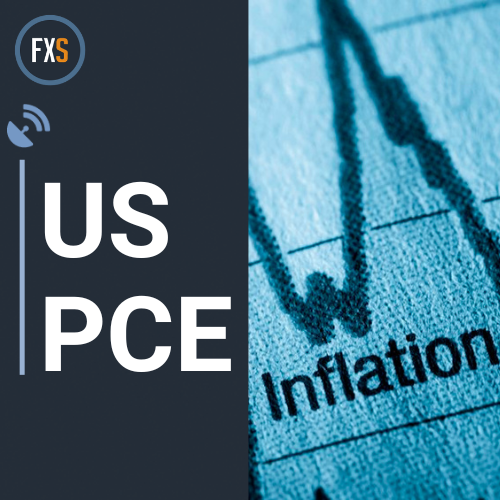US Core PCE Preview: Forecasts from eight major banks, inflation coming in at target

The Fed’s preferred inflation gauge, the Core Personal Consumption Expenditure (PCE), will be released by the US Bureau of Economic Analysis (BEA) on Friday, January 26 at 13:30 GMT and as we get closer to the release time, here are the forecasts of economists and researchers of eight major banks.
Headline PCE is expected to remain steady at 2.6% year-on-year while core is expected to fall two ticks to 3.0%. On a monthly basis, both are expected to come in at 0.2%.
TDS
We look for the December data to continue supporting the idea of inflation deceleration, with the core PCE advancing at a near-trend 0.2% MoM – and below the core CPI's 0.3% increase. Notably, the December data are likely to show that the 3m/6m momentum in core PCE prices has dropped below the 2% objective, which will add to the evidence that the worst for inflation has likely passed.
Deutsche Bank
We see core PCE growth staying at +0.1%.
NBF
The annual core PCE deflator may have progressed 0.2% MoM in December, a result which should translate into a 2-tick decline of the 12-month rate to 3.0%. Although still high, this would still be the lowest rate observed in 33 months.
SocGen
We project a 0.3% increase for the core PCE deflator, but that is a rounding up to 0.3%. The core CPI posted an increase of 0.309%. Core CPI runs faster generally than core PCE. Mostly this is due to a heavier weighting for rents and shelter that tend to grow much faster than the overall CPI. Critical now is the slowing pace of moderation in the CPI, whereas the PCE is still dropping rapidly. Sticky rents are the issue. Core PCE has substantially greater medical care components, and specifically government funded healthcare, whereas the CPI captures just household out-of-pocket healthcare costs. After a surge during COVID, government and general healthcare costs are moderating.
CIBC
Based on the December CPI report and the wider gap between CPI and PCE, we expect the core PCE deflator to be 0.2% MoM and 3.0% YoY in December.
Wells Fargo
We look for both the headline and core PCE deflators to rise 0.2% over the month, which if realized, would be slight accelerations relative to November.
Goldman Sachs
The forecast for core PCE inflation in December is 0.18%, translating to a six-month annualized rate of 1.88% and a YoY rate of 2.94%. This reflects the Fed's primary measure of inflation. Headline PCE prices are also projected to increase by 0.18% in December, corresponding to an annual rate of 2.63%.
Citi
We expect another 2.0% annualized QoQ increase in core PCE inflation and a 0.19% MoM, a stronger increase than in the past few months, but still notably softer than the recent pace of core CPI inflation.
Author

FXStreet Insights Team
FXStreet
The FXStreet Insights Team is a group of journalists that handpicks selected market observations published by renowned experts. The content includes notes by commercial as well as additional insights by internal and external analysts.
















